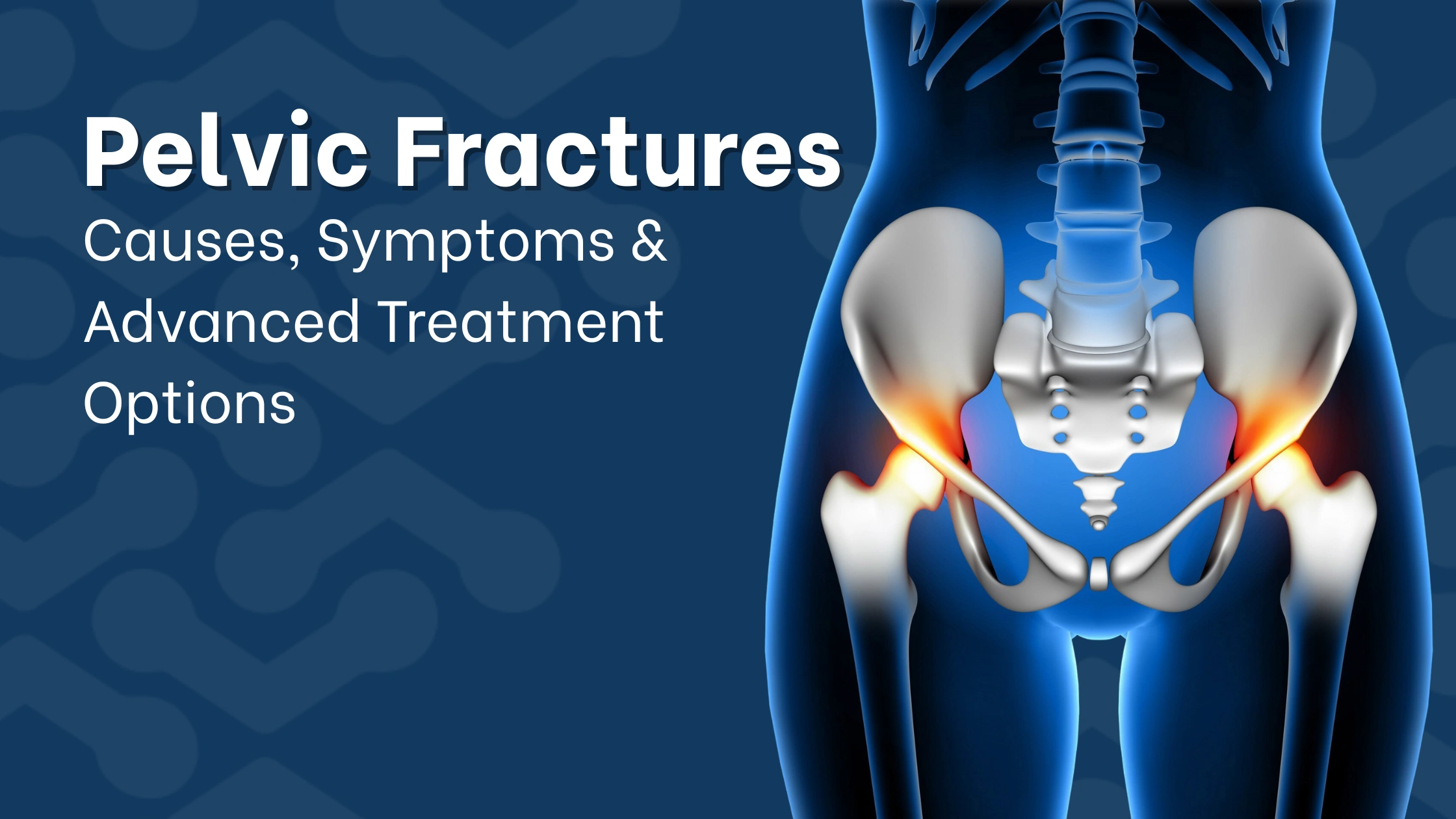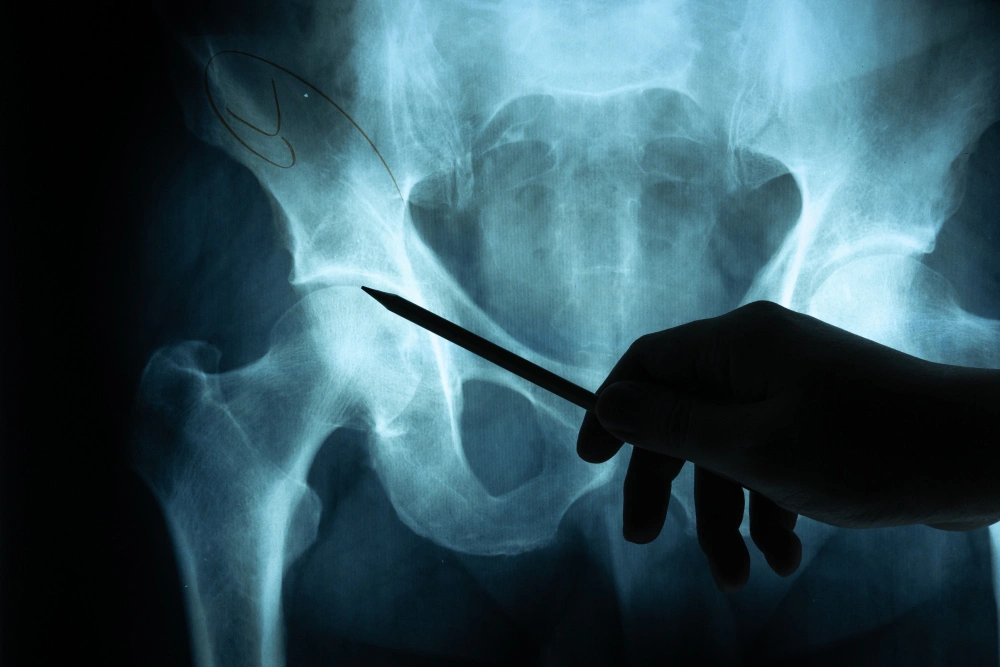Pelvic Fractures: Causes, Symptoms & Advanced Treatment Options

Pelvic fractures are serious injuries that can greatly impact mobility, daily life, and even organ function if not treated appropriately. The pelvis is a ring-like structure of bones that supports the spine and houses critical organs like the bladder, intestines, and reproductive organs. A fracture in this area—whether due to high-impact trauma or underlying medical conditions—requires immediate attention and expert orthopedic care.
What Is a Pelvic Fracture?
A pelvic fracture refers to a break in any of the bones that make up the pelvic ring, which includes the ilium, ischium, pubis, and sacrum. These fractures can range from minor, stable injuries to complex, life-threatening conditions depending on the force and area of impact.
Common Causes of Pelvic Fractures
Pelvic fractures can result from a variety of situations:
- High-impact trauma: Road accidents, falls from heights, or crush injuries are common causes in younger individuals.
- Sports injuries: Intense impact during contact sports or extreme physical exertion can cause stress fractures in the pelvic bones.
- Osteoporosis: In older adults, weakened bones due to osteoporosis can fracture even with low-impact falls or pressure.
Pathological fractures: Conditions like bone cancer or infections can weaken the pelvic bones and lead to fractures.
Types of Pelvic Fractures
- Stable Fractures: Only one break in the pelvic ring, bones remain aligned. These often heal without surgery.
- Unstable Fractures: Two or more breaks with bone displacement. These typically require surgical intervention.
- Open Fractures: The broken bone pierces through the skin—these are serious and carry a high risk of infection.
- Acetabular Fractures: Involves the socket of the hip joint, which may affect mobility and require advanced surgical care.
Symptoms of a Pelvic Fracture
Depending on the severity of the injury, symptoms may vary. Common signs include:
- Severe pain in the hip, groin, or lower back
- Inability to walk or stand
- Swelling or bruising around the pelvic area
- Difficulty urinating or blood in the urine (if organs are affected)
- Numbness or tingling in the groin or legs
- Visible deformity or leg length difference in severe cases
If you suspect a pelvic fracture, do not attempt to move the patient—call emergency medical services immediately.

Diagnosis
Diagnosis typically involves:
- X-rays: To identify the type and location of the fracture.
- CT scans: Provide a more detailed view, especially for complex or acetabular fractures.
- MRI: In cases where soft tissue damage or internal organ involvement is suspected.
Treatment Options
Treatment depends on the severity, type of fracture, and the patient’s overall health.
Non-Surgical Treatment (For Stable Fractures):
- Bed rest and limited movement
- Pain management
- Physical therapy after initial healing
- Use of walking aids like crutches or walkers

Surgical Treatment (For Unstable or Complex Fractures):
- Internal fixation: Metal plates and screws are used to stabilize the bones.
- External fixation: Metal rods outside the body are connected to bones to keep them aligned during healing.
- Joint reconstruction: For acetabular fractures affecting the hip joint, advanced joint reconstruction or even hip replacement may be required.
Dr. Abhishek Bhalotia, a UK-trained orthopedic and joint replacement surgeon, specializes in complex trauma surgeries including pelvic and acetabular fracture management. His use of advanced techniques and precision-based interventions ensures reduced complications and faster recovery.
Recovery and Rehabilitation
Recovery time for pelvic fractures can range from 8 to 12 weeks for stable fractures to several months for more severe injuries. Rehabilitation includes:
- Gradual weight-bearing exercises
- Physiotherapy for restoring joint mobility
- Muscle strengthening to regain balance and coordination
- Lifestyle modifications and fall prevention tips, especially for elderly patients
Prevention Tips
While not all pelvic fractures can be prevented, especially in cases of trauma, the following steps can reduce risk:
- Maintain good bone health with calcium and vitamin D
- Regular weight-bearing exercises to improve bone density
- Prevent falls at home—use handrails, remove slippery rugs
- Wear protective gear during high-risk sports or activities
- Manage conditions like osteoporosis under medical guidance
Final Thoughts
Pelvic fractures are serious injuries that demand expert orthopedic attention and timely intervention. From diagnosis to rehabilitation, a patient-centric approach is essential for successful outcomes. With advanced care from specialists like Dr. Abhishek Bhalotia, patients can look forward to safe recovery and restored mobility.
If you or a loved one experiences signs of a pelvic injury, don’t delay—consult an orthopedic expert immediately.


